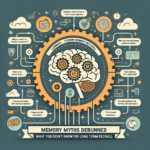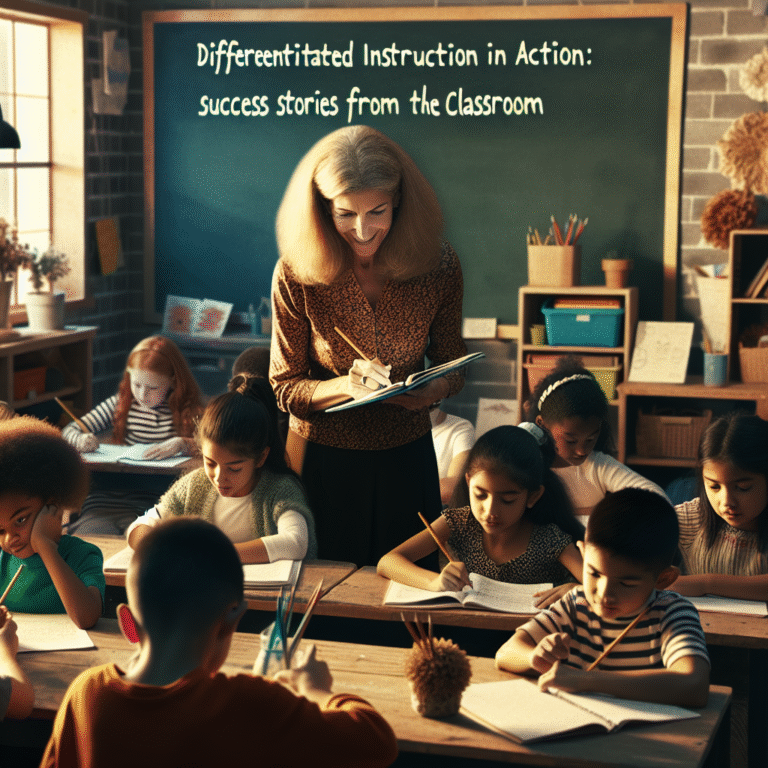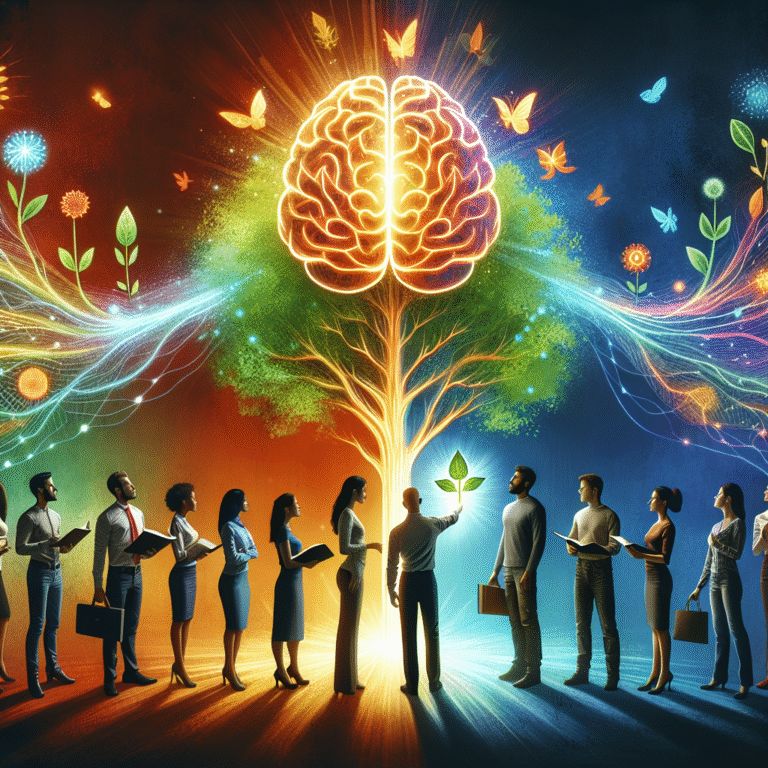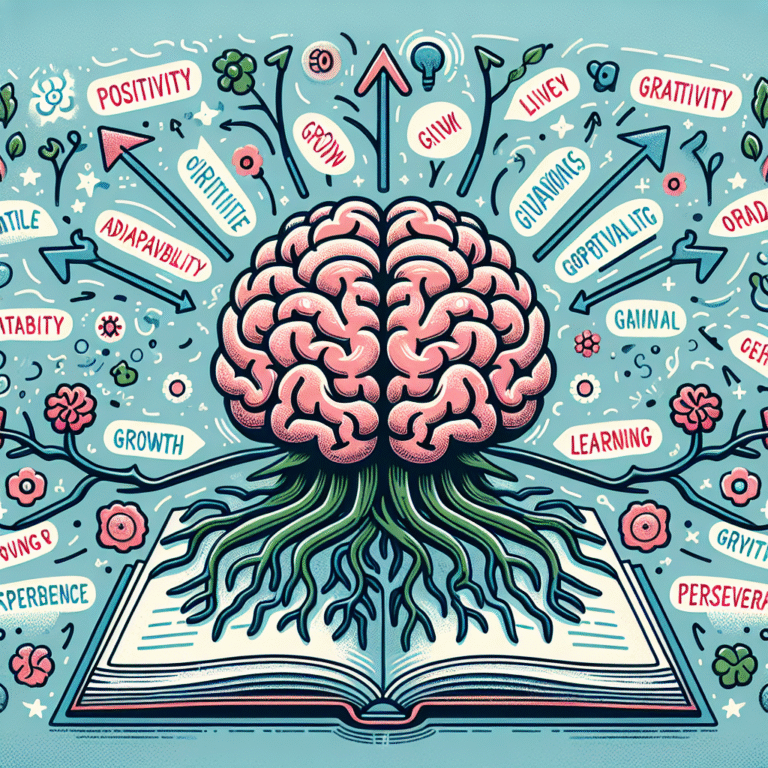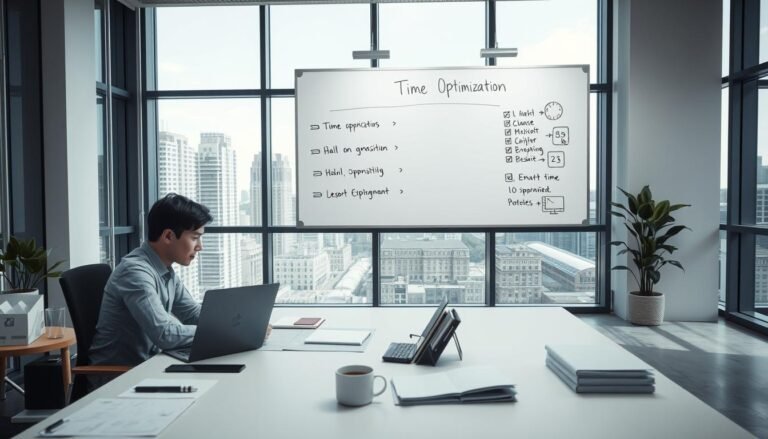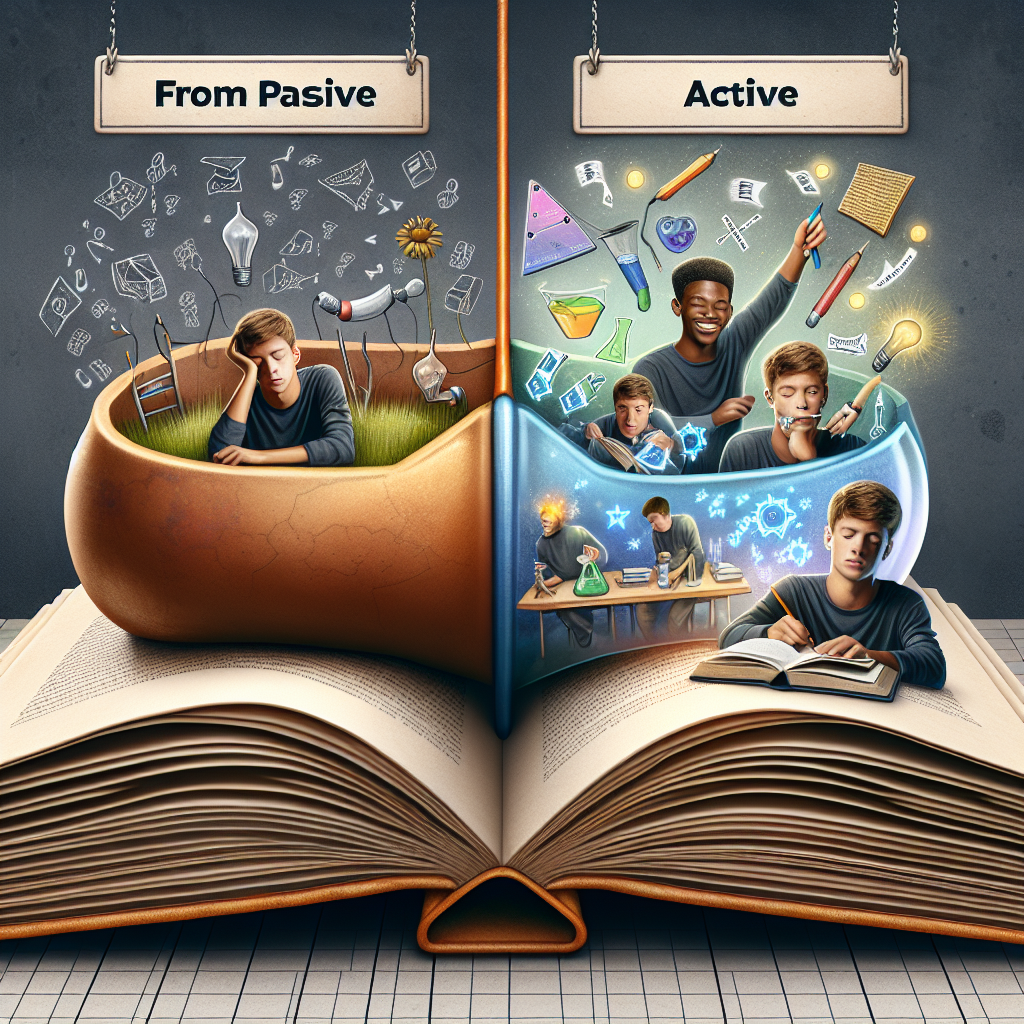
Introduction
Imagine a classroom where students are not just recipients of knowledge, but active participants in their learning journey. Where they set their learning goals, monitor their progress, and reflect on their successes and failures. This is not just a utopian vision; it is a reality made possible by self-regulation. In this article, we will explore From Passive to Active: The Transformation of Learning Through Self-Regulation, discussing its significance, real-life applications, and practical strategies to empower learners at all levels.
The Importance of Self-Regulation in Learning
Self-regulation is a critical skill that allows individuals to take control of their learning process. It encompasses goal setting, self-monitoring, and self-reflection. By cultivating self-regulation, learners transition from passive recipients of information to active constructors of their knowledge. This transformation maximizes engagement, motivation, and retention.
Key Components of Self-Regulation
Understanding self-regulation requires familiarity with its key components:
- Goal Setting: Establishing specific, measurable, attainable, relevant, and time-bound (SMART) goals helps students focus their efforts.
- Self-Monitoring: Keeping track of one’s own progress allows learners to adjust strategies based on what is or isn’t working.
- Self-Reflection: Evaluating one’s own learning outcomes supports continuous improvement and fosters a growth mindset.
| Component | Description | Example |
|---|---|---|
| Goal Setting | Establish SMART goals | "I will read two chapters by Friday." |
| Self-Monitoring | Tracking your own progress | Using a learning journal |
| Self-Reflection | Assessing successes and areas for growth | Daily reflection on what worked |
The Evolution from Passive Learning to Active Engagement
Traditional Learning Models
Historically, educational settings have favored passive learning models—think lectures, rote memorization, and standardized testing. Students were seen as blank slates, expected to absorb information without much engagement.
The Shift to Active Learning
With research showing that active involvement significantly enhances learning retention, educators are increasingly integrating active learning strategies into their curricula. From Passive to Active: The Transformation of Learning Through Self-Regulation not only boosts retention rates but also makes learning more enjoyable and effective.
Case Study: The Flipped Classroom Model
In the flipped classroom model, traditional lecture content is delivered outside of the classroom, often through videos. Class time then focuses on exercises, projects, and discussions, transforming the learner’s role. Students take charge of their learning, utilizing self-regulation to prepare for engagement in class activities.
Relevance: This case illustrates how shifting the responsibility of learning from the teacher to the student can enhance self-regulatory skills and deepen understanding.
Strategies for Promoting Self-Regulation
To embrace the transition from passive to active learning, educators and learners can implement several strategies to foster self-regulation:
1. Encourage Self-Assessment
Allowing learners to evaluate their understanding fosters ownership of the learning process. Tools like rubrics and checklists can aid this self-assessment, promoting reflection.
2. Foster Goal-Setting Practices
Creating a structured framework around goal-setting can empower learners. Educators can introduce workshops focusing on SMART goals. This practical approach helps in making goal-setting tangible and attainable.
3. Incorporate Technology
Digital platforms like learning management systems can support self-regulation by offering analytical tools that allow students to track their progress in real-time.
| Technology Tool | Purpose | Example Use |
|---|---|---|
| Learning Management | Progress tracking and resource access | Google Classroom |
| Apps | Goal-setting reminders | Habitica or Trello |
4. Promote Group Work and Collaboration
Collaboration can also enhance self-regulation. Group projects encourage students to set collective goals, monitor each other’s contributions, and reflect on team outcomes.
5. Teach Time Management Skills
Time management is a cornerstone of self-regulation. Encouraging learners to create schedules and prioritize tasks can lead to more effective learning experiences.
Case Study: The Use of Learning Journals
In a middle school setting, teachers introduced learning journals to promote self-reflection and goal-setting. Students wrote weekly reflections on their progress, which facilitated meaningful conversations about learning goals and adjustments.
Relevance: This approach nurtures self-regulation, enabling students to articulate their learning journeys and identify areas for improvement.
Overcoming Challenges to Self-Regulation
While the transition from passive to active learning through self-regulation is powerful, it does come with its challenges.
1. Resistance to Change
Students accustomed to passive learning may initially resist active engagement. Educators can mitigate this through gradual implementation strategies and constant reinforcement of the benefits.
2. Lack of Skill Development
Self-regulation is not innate; it requires practice. Schools should invest in teaching these skills explicitly, integrating them into the curriculum rather than leaving them to chance.
3. Parental Support
Parental involvement can significantly affect a learner’s journey. Educators should work with parents to understand self-regulation and how they can support their children’s learning goals at home.
Conclusion
From Passive to Active: The Transformation of Learning Through Self-Regulation is about enabling learners to become self-directed, engaged, and empowered individuals. By employing strategies that foster self-regulation, educational environments can cultivate a culture of active learning and continuous improvement.
As we move forward, educators and learners alike must embrace the ongoing journey of transformation. Take action today—set a learning goal, monitor your progress, and reflect on your experiences. The power of self-regulation awaits!
FAQs
1. What is self-regulation in learning?
Self-regulation in learning refers to the ability of individuals to plan, monitor, and assess their own learning processes. It empowers learners to set goals, track their progress, and adjust strategies as needed.
2. How can I develop self-regulation skills?
You can develop self-regulation by setting specific learning goals, regularly assessing your progress, and reflecting on your learning outcomes. Engaging with peers and seeking feedback can also enhance your self-regulatory skills.
3. What are the benefits of active learning?
Active learning promotes deeper understanding, higher retention rates, and increased engagement. It transforms learners into active participants, leading to enhanced critical thinking and problem-solving skills.
4. Can self-regulation be taught in schools?
Absolutely! Educators can teach self-regulation through structured goal-setting activities, self-assessment tools, and collaborative projects. Explicit instruction in these skills can lead to meaningful development.
5. How does technology facilitate self-regulation?
Technology offers a range of tools that support self-regulation, such as learning management systems for tracking progress and apps for goal management. These resources can empower learners to take control of their educational journey.
By emphasizing self-regulation, we can shift educational paradigms and create empowered, engaged learners ready to tackle future challenges.


